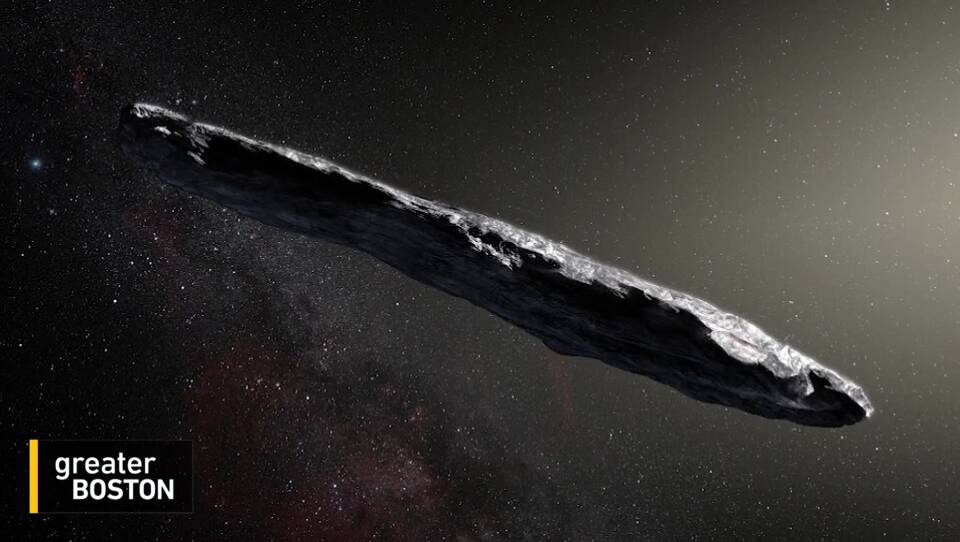There’s a new theory that a mysterious object that passed by earth last year may have been an alien probe intentionally sent here from some other civilization outside our solar system.
The object was first discovered a little over a year ago. And it has a name: Oumuamua. That’s Hawaiian.
“And it means a visitor from far away, coming for the first time,” said Avi Loeb, the chair of Harvard University's Astronomy Department, who published a paper on the object in the Astrophysical Journal Letters .
“This is the very first object that we found in the solar system that originated from outside the solar system,” Loeb said. “It's a visitor from outer space. Sort of like a guest that comes for dinner and you can learn about the country where the guest came from without buying an airline ticket to visit that country.”
And this one doesn’t look like the guests we usually get.
“It turned out to be very weird,” Loeb said. “It's nothing like we have seen before in the solar system.”
That novelty — this thing’s unusual shape and the way it moves — led Loeb to some hypotheses that sound more like science fiction than science. This thing has a long, narrow shape and rotates. It doesn’t have a tail like a comet. And it accelerated in a way they didn’t expect, given the sun’s gravitational force.
“In this paper that we wrote, we proposed that the extra push that Oumuamua is getting is produced by radiation from the sun,” he said. “Sunlight is pushing on it just like the air is pushing on a sail.”
Loeb is leading a project to develop this kind of technology here on Earth — a sail that could use light to push a spacecraft. But for it to be pushed by light, the object would need to be less than a millimeter thick. And he says that’s just not the kind of shape that occurs naturally.
“If indeed this object is very thin like a sail then it's quite likely that it's produced ... artificially by another civilization,” Loeb said.
Yes, another civilization.
Remember, Loeb is the chair of astrophysics at Harvard. He says it could either be debris from some kind of alien technology, or it could be some kind of probe sent here deliberately. Loeb knows that sounds crazy to some people. But he says his approach to the subject is scientific and evidence-based. “And I follow the maxim of Sherlock Holmes. When you have excluded the impossible whatever remains, however improbable, must be the truth.”
Kelly Beatty, the editor of Sky and Telescope Magazine, follows a different maxim, from astronomer Carl Sagan: “Extraordinary claims require extraordinary evidence.” And Beatty says there’s just not the evidence to support this one.
“This object came ... closer to the sun than Mercury,” Beatty told WGBH News . “It would have experienced a temperature of like 900 degrees, hot enough to melt lots of things. So the aliens must be very clever with their technology to build a membrane that could withstand heat.”
Also, Beatty doesn’t agree something as thin as a sail would survive out there in space. “It can't, in my mind, last for the millions, if not billions, of years across interstellar space," he said noting all of the damage that would occur during its trip.
Avi Loeb, however, is undeterred by other scientists punching holes in his theories. He thinks most scientists are too conservative.
“I think the privilege of being a scientist is to maintain your childhood curiosity and remain youthful in the way you approach nature, in the sense that you admit that you don't know everything and you ask questions and you are willing to make mistakes, and you're taking risks,” he said.
And, he said, it’s arrogant to think we’re the only ones in the universe. “I prefer to believe in modesty. I call it cosmic modesty,” Loeb said.
And that cosmic modesty means accepting that we are not special. Somewhere out there are other civilizations. And for the first time, we may have just spotted a sign that they’re checking us out.





